2004 Annual Meeting
EMTA Annual Meeting 2004: Venezuela’s Finance Minister Nobrega Stresses Liability Management
Analyst Panels Highlight Prospects for Local Markets, Currencies EMTA’s Annual Meeting was held on Thursday, December 2, 2004. Citibank once again hosted the event, which attracted an audience of over 350. The meeting included two panel discussions featuring leading industry analysts and investors, and Venezuela’s Finance Minister Tobias Nobrega delivered the Keynote Address. In addition, EMTA Executive Director Michael Chamberlin announced the results of the elections to EMTA’s Board of Directors.
EMTA’s Annual Meeting was held on Thursday, December 2, 2004. Citibank once again hosted the event, which attracted an audience of over 350. The meeting included two panel discussions featuring leading industry analysts and investors, and Venezuela’s Finance Minister Tobias Nobrega delivered the Keynote Address. In addition, EMTA Executive Director Michael Chamberlin announced the results of the elections to EMTA’s Board of Directors.
Panelists described local markets instruments and local currencies as the most promising Emerging Markets debt investments in 2005 (with investor panelists forecasting 15% returns). Speakers were more conservative in their overall outlook for the asset class in 2005, with several suggesting that returns on external debt could be negative. A number of the participants also raised the possibility that investors consider Emerging Markets equities for better 2005 returns.
Investors Debate Dollar Decline
Investor panel moderator Tom Trebat (Citigroup) began by pointing out where predictions made at the 2003 Annual Meeting had panned out and where they had proven incorrect. Trebat observed that much of the “big picture” had been forecast accurately, while acknowledging that neither the surge in oil prices nor the aggressiveness of the FOMC had been foreseen.
A discussion of the global economic outlook followed, including a debate on the future value of the US dollar. Hari Hariharan (NWI Management) argued that the dollar “hasn’t even gone 15-20% of where it is eventually going to go,” and labeled as “absurd” research pieces “prematurely claiming victory” that the dollar had now corrected.
In contrast, Rob Citrone (Discovery Capital Management) foresaw only another 10-15% decline in the value of the dollar on a trade-weighted basis, and predicted it would reach its lowest levels in 2005 vs. many developed world currencies. Alliance Capital Management’s Paul DeNoon agreed that “focusing on the dollar is important,” yet noted he was also “not as bearish on the dollar as others might be.”
How to Sell the Asset Class In 2005
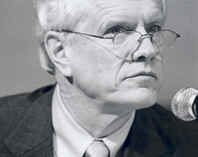
Trebat polled the panel for their thoughts on how to sell the asset class in 2005. J.P. Morgan’s Ruggero De’Rossi predicted that the asset class would be an easy sell “as long as Fed funds are at 2%...but when they get to 4%, I don’t know how many people will be interested in EM debt.” Hariharan affirmed that a “compelling claim” could be made that “the asset class is behaving more and more like a true bond market; now we have had a sustained time when periods of market uncertainty were not matched with calamitous price declines.”
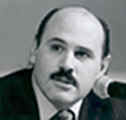 Citrone reasoned that “money will follow past returns, so whether or not I think it is a good time to get into EM debt, you will probably see a lot of money flow into EM next year.” While a correction in global credit markets could quickly stop inflows and spur outflows, the asset class remains attractive on a comparative basis, he added. DeNoon also stressed that the asset class should be sold on a relative basis, asserting “it’s incorrect for EM debt to be sold on an absolute basis.”
Citrone reasoned that “money will follow past returns, so whether or not I think it is a good time to get into EM debt, you will probably see a lot of money flow into EM next year.” While a correction in global credit markets could quickly stop inflows and spur outflows, the asset class remains attractive on a comparative basis, he added. DeNoon also stressed that the asset class should be sold on a relative basis, asserting “it’s incorrect for EM debt to be sold on an absolute basis.”
Investors Optimistic On Local Market Prospects
Trebat also solicited investor comments on specific local market opportunities. De’Rossi spoke positively about the Indian rupee, the Indonesian rupiah and the Thai baht, but concluded that the best opportunities were in Latin America , specifically the Mexican peso.
Citrone echoed optimism vis-à-vis the rupee and baht, but also recommended the Chilean peso, suggesting that the Central Bank may allow it to appreciate. Hariharan urged investors to “keep an eye on the Russian ruble.”
Slightly more cautious than his colleagues, DeNoon warned that “sometimes it is hard to differentiate true fundamental improvements from just tons of global liquidity.” However, he recommended a basket of Latin American currencies, the Turkish lira (though Ankara’s reliance on “too much short-term financing” could be a problem) and the South African rand.
There was some disagreement on the timing of a new exchange rate regime in China. Citrone believed that Beijing has already made a decision regarding a new currency regime and only its public announcement remains (he ventured that such an announcement was possible in the first half of 2005). In contrast, DeNoon stressed the reluctance of Chinese officials to be “forced into a change.” According to DeNoon, the timing of any regime change remained uncertain, and he observed that “we don’t think it is going to happen real quickly.”
Trebat concluded the investor discussion by inviting speakers to discuss individual countries. Differences of opinion became clear on Argentina and Ecuador, while several speakers concurred in their upbeat assessment of Russia .
“We may not like the politics, but the fundamentals in Argentina are improving dramatically,” asserted Citrone who saw dollar-denominated Argentine Bodens as an especially attractive investment. De’Rossi concurred that Argentine assets might be attractive, while preferring less widely-held instruments. In sharp contrast, Hariharan described holding Argentine debt as “a colossal waste of time.”
De’Rossi, a self-proclaimed oil bear, suggested that Ecuador debt was a possible sell as “even with  these high oil prices, they have been able to put aside zero in their market stabilization fund!” DeNoon countered that Ecuador would be “worth looking at” for investors bullish on oil pricing, while commenting that the ratings agencies had done a service to the country by maintaining a CCC+ rating, and thus preventing access to the capital markets. (NB: Ecuador’s credit rating was unexpectedly upgraded to B- by Standard & Poor’s in mid-January 2005.)
these high oil prices, they have been able to put aside zero in their market stabilization fund!” DeNoon countered that Ecuador would be “worth looking at” for investors bullish on oil pricing, while commenting that the ratings agencies had done a service to the country by maintaining a CCC+ rating, and thus preventing access to the capital markets. (NB: Ecuador’s credit rating was unexpectedly upgraded to B- by Standard & Poor’s in mid-January 2005.)
Citrone offered his assessment that the market might be overly optimistic in its view of the Dominican Republic. “We believe the market is wrong in thinking they just have a liquidity crisis; we think they actually have a solvency problem,” he affirmed. Citrone conceded that the fiscal deficit might improve slightly, “from 8% to 6% in 2005,” but added that “the amount of additional liabilities that are going to have to be absorbed by the sovereign are enormous because the private sector in the Dominican Republic is bankrupt – they can’t pay the loans back.” Citrone expressed doubt that the country would be able to conclude an IMF agreement and that “even if they do, it will probably last one disbursement before they go off track, and that will be the end of that.” Finally, he predicted that textile exports would be “obliterated” in 2005 with the removal of WTO quotas.
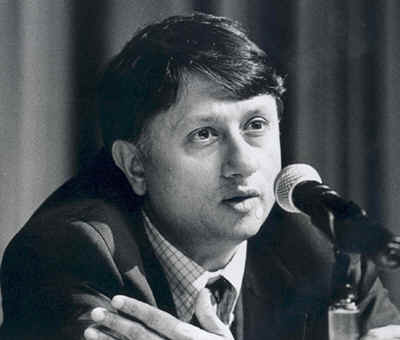 Hariharan spoke enthusiastically about Russia, calling the country’s debt the most “absurdly mispriced” in the market. “This is a country which is now accreting reserves on a weekly basis at between 3-5% of outstanding public debt,” he stated. DeNoon echoed such positive sentiments, declaring that “if you look at the numbers, Russia deserves to be a BB- or higher-rated credit.” (NB: Russia was awarded a third investment grade rating by Standard & Poor’s in January 2005). He was similarly positive on Ukraine, saying economic fundamentals argue for “multiple upgrades.”
Hariharan spoke enthusiastically about Russia, calling the country’s debt the most “absurdly mispriced” in the market. “This is a country which is now accreting reserves on a weekly basis at between 3-5% of outstanding public debt,” he stated. DeNoon echoed such positive sentiments, declaring that “if you look at the numbers, Russia deserves to be a BB- or higher-rated credit.” (NB: Russia was awarded a third investment grade rating by Standard & Poor’s in January 2005). He was similarly positive on Ukraine, saying economic fundamentals argue for “multiple upgrades.”
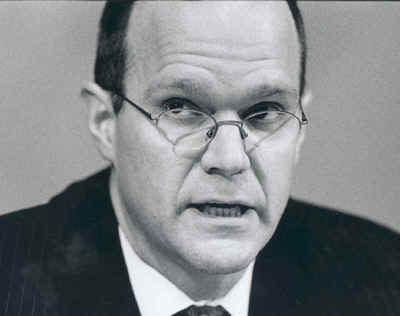 However, DeNoon was less optimistic on some of Russia’s neighbors, warning that “convergence countries in Europe are probably overrated unless they begin to address some of their deficit issues.” He specified Hungary as being “at the top of that list.”
However, DeNoon was less optimistic on some of Russia’s neighbors, warning that “convergence countries in Europe are probably overrated unless they begin to address some of their deficit issues.” He specified Hungary as being “at the top of that list.”
In contrast to their optimism on prospects for local markets, investors expected a difficult environment for external debt issues in 2005. Panel consensus was for a flat return on external debt, with individual forecasts within a tight range of -2% to 4%.
Nobrega: Liability Management and Fiscal Policy, Not Oil, Drive Recovery
Venezuela’s Finance Minister Tobias Nobrega delivered the meeting’s keynote address. In his remarks, Nobrega stressed that the country’s debt liability management program and fiscal policy had driven the recovery of Venezuelan bond prices. Previous Finance Ministers to have addressed the EMTA Annual Meeting include Finance Ministers Gil-Diaz and Ortiz of Mexico, Cavallo of Argentina, Malan of Brazil and former finance US Treasury Secretary Brady.
In introductory remarks, Luis Oganes, Co-Head of Latin American Research at JP Morgan, noted that Nobrega’s appointment coincided with stressful times in Venezuela. Minister Nobrega took office just three weeks after the attempted coup against President Hugo Chavez in April 2002, Oganes pointed out, and was responsible for leading the country’s economy during the nationwide strike of 2002-2003. Oganes praised Nobrega for working to reopen the capital markets for Venezuela during such difficult times and noted that, since August 2003, the Republic has tapped the markets for $8 billion in debt issuance. Oganes reminded attendees that through liability management operations, including Brady buybacks and debt swaps, Nobrega has been able to improve the country’s debt profile, while at the same time reducing the number of Venezuelan debt instruments outstanding and making the remaining issues more liquid.
“Country risk perception has clearly improved,” during Nobrega’s tenure, according to Oganes, who observed that spreads on Venezuelan debt had compressed as much as 800 bps during Nobrega’s term. While oil prices explained some of this spread tightening, Oganes also credited much of it to the “savvy liability management strategy pursued by the economic team under Minister Nobrega.”
In his prepared remarks, Finance Minister Nobrega summarized the economic results of recent years in Venezuela. “The macroeconomic results have been shaped by the political conflicts of 2002 and 2003,” he observed, adding that “a decline in GDP, an increase in inflation and persistent deficits…can all be seen as an anomalous result related to these political conflicts that stand in stark contrast to what has otherwise been a story of a solvent credit.”
While acknowledging that analysts faced difficulty in 2002 and 2003 forecasting Venezuela’s macroeconomic factors because of the political variables, the situation has now changed. Indeed, Nobrega asserted that credit rating agencies are now “lagging” in their assessment of the country’s creditworthiness.
The Minister attributed much of the country’s recovery to government spending, now at 22% of GDP, up from 18.8% in 2000. “Long-term growth potential is being enhanced because much of this spending is on infrastructure and the development of human capital – health and education projects,” according to Nobrega. He argued that the rebound in non-oil fiscal revenues was also noteworthy, and is a result of reforms enacted in 2002.
The Minister on several instances defended the use of increased government spending to fuel the country’s economic recovery. “If Venezuela had…applied the traditional recipe of reducing spending, as pursued by other governments, one would probably not see the recovery we are seeing this year,” the Minister declared. He affirmed that if Venezuela had followed IMF policies of expenditure cuts in 2002-03, the result would have been a “sharp social crisis that could have led to some sort of government transition, which could have further led to a moratorium on debt service.” As a result of renewed political and social stability, the Minister reasoned, the government could now turn its focus back to pursuing reforms and to reducing the country’s dependence on oil sector revenue.
Nobrega compared Venezuela’s current economic health to its prognosis in previous decades. “In 1991, when the country’s second IMF program was in place, the country’s indebtedness rations were much higher than the current one, and at that time there was not much of an issue of concern among analysts about solvency.” Nobrega pointed out that, in comparison now, when the country has no IMF program in place, it has lower debt to GDP ratios, a better fiscal structure and a higher VAT.
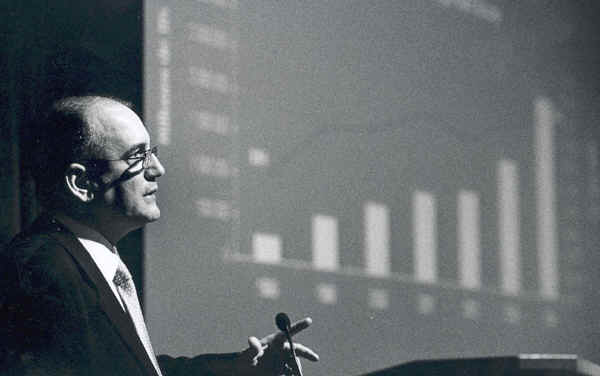 He discussed the country’s liability management program, noting that the Ministry was taking a more active stance and aimed to pursue a more transparent relationship with both the external and local markets. The Ministry’s goal was to reduce short-term debt and, since 2002, liability management operations in the local market have reduced the number of local debt instruments, while increasing their maturity profile. In addition, Nobrega credited the liability management program with contributing to a significant compression in spreads on Venezuelan debt.
He discussed the country’s liability management program, noting that the Ministry was taking a more active stance and aimed to pursue a more transparent relationship with both the external and local markets. The Ministry’s goal was to reduce short-term debt and, since 2002, liability management operations in the local market have reduced the number of local debt instruments, while increasing their maturity profile. In addition, Nobrega credited the liability management program with contributing to a significant compression in spreads on Venezuelan debt.
“If you compare the debt service profiles before and after these liability management operations, you will see that there is a significant decline in the debt service burden,” Nobrega asserted. The Minister confirmed that the Republic is planning to continue these operations in 2005 with a goal of refinancing the equivalent of US$2 billion, although an even larger amount (US$4 billion) has been authorized.
The Minister touched on changes in both the country’s external and domestic debt markets. Venezuela was previously only an “occasional borrower” in the international capital markets, and it had not been active in the market since the issuance of the 2027 bond in 1997, he noted, but recently Venezuela has been a more regular issuer of external debt. There has also been progress in deepening the local market with the extension of maturities, and in democratizing the local markets by making instruments available to small savers, Nobrega remarked, as the government pursued a strategy to foster liquidity in the local market. At the same time, Nobrega dismissed concerns that increased government borrowing had crowded out the private sector, and highlighted that credit to the public sector had increased.
The Minister concluded his prepared remarks with an announcement that the Venezuelan government did not consider itself to be benefiting from an “oil boom,” and pointed out that in real terms oil exports were well below peak levels in the 1970s and 1980s. Thus, the Minister reiterated, oil prices “cannot be taken to be the main driver of the economic recovery that Venezuela is experiencing right now.”
Nobrega then took questions from the audience, addressing a number of topics including the outlook for state oil company PDVSA. In response to one question, he informed the audience that the government’s budget for 2005 assumed a devaluation to 2150 VEB per dollar, with a one-time devaluation on January 1, 2005.Later, government officials denied that the bolivar would be devalued on January 1, and indeed no devaluation occurred on that date.
Upon his return to Caracas, Minister Nobrega abruptly resigned from his position. While his resignation had been rumored for several months, the timing surprised many analysts.
Minister Nobrega’s slide presentation is available on the EMTA website at www.emta.org/media/vdejh3yv/9c8563cb-b101-49fd-a99a-718fa2a2ed27.pdf.
Sell-Side
Joyce Chang (J.P. Morgan) introduced the Sell-Side panel discussion by projecting a slide which listed the forecasts for key economic variables at each of the panelists’ firms. This slide is available at www.emta.org/media/d4wn14qr/6a71682f-67c4-47fa-b5a8-5c0e3b04f2f5.pdf.
Ms. Chang noted that 2004 turned out to be a better year than panelists had predicted the previous December, when speakers had forecast EM debt returns of 0% to 4%. She then reviewed forecasts from panelist firms which revealed expectations that oil would remain at high levels, the dollar would weaken and that EM growth in 2005 could be strong, while spreads on EM debt widened.
Ms. Chang questioned her colleagues about whether there was a direct link between higher rates on UST bonds and higher spreads on EM bonds, and further invited panelists to discuss likely investor risk appetite in 2005. ABN Amro’s Arturo Porzecanski responded that “in general, yes, EM bonds tend to dance to the tune of Treasuries, but as we have seen, there are significant departures from this point.” The relationship is not 100% correlated, according to Porzecanski, who continued that it depends upon what is happening in EMs themselves and how 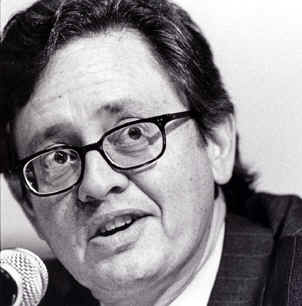 higher UST rates come about (“in a panic…people will sell first and ask questions later”).
higher UST rates come about (“in a panic…people will sell first and ask questions later”).
Tulio Vera (Merrill Lynch), addressing risk appetite, predicted it would most likely decline over the year, having been “too strong for too long….something’s got to give at some point.” Goldman Sachs’ Paulo Leme argued that the global economic environment was still supportive of EMs. While Leme expected additional spread compression in the first months of 2005, he voiced concerns that a weaker US dollar and higher US rates could more than reverse any gains later on in the year.
Ms. Chang referred to the investor panel’s bullishness on local instruments and local currencies, and requested speaker recommendations on local market investments. Sell-Side panelists were unanimous in recommending Asian currencies, but differed in their other selections. David Sekiguchi (Deutsche Bank) and Leme recommended the Chilean peso, while Leme, Chang and Porzecanski concurred in their positive outlook on the Russian ruble. Vera spoke enthusiastically about the Mexican peso and the Polish zloty, “although we don’t like it as much as we did when we recommended it here last year.” Porzecanski noted his aversion to the South African rand and Eastern European currencies, which he suggested were overvalued.
Brazilian Rate Outlook
Turning to a discussion on Brazil, participants debated the outlook for rates in the Brazilian market. Leme underscored the seriousness of the Central Bank to achieve its inflation target of 5.1% and noted this could prove quite difficult, with the possibility of interest rates having to be raised “quite significantly.” However, a significant fall in the price of oil, combined with an appreciation of the real, could cause expected inflation to fall and thus change the trajectory of rate hikes. Leme highlighted the strong language of recent Central Bank min utes, which he interpreted to signal that rates would be hiked aggressively over the winter.
utes, which he interpreted to signal that rates would be hiked aggressively over the winter.
Vera defended the Central Bank’s hawkish stance on Brazilian rates and observed that he expected an easing of rate hikes in 2005. “In contrast to the past, Brazil is tightening for the right reasons—growth and the inflation ramifications of that growth, rather than because of crisis events or shocks as in the past, and that is a very important distinction,” he stated.
Porzecanski pointed out that, while fixed income analysts are cheering on the Central Bank, equity analysts see the Bank as ruining the equity market rally. While also defending Brasilia’s hawkishness, he opined that, regrettably, the Central Bank has almost never achieved its inflation target and questioned whether their goals were overambitious, if their definition of an inflation target should be redefined to core inflation exclusively, or whether the Bank should be acting earlier (“I believe the Central Bank in Brazil is always behind the ball with rate moves,” he affirmed, “and they haven’t yet grasped the art of being ahead of the numbers”).
Argentina Deal
Most speakers expected the Argentine restructuring to be completed, although not without difficulties. Sekiguchi offered a fairly optimistic assessment about the restructuring and short-term dynamics, commenting that “our sense is that we will see participation rates of 60-70%, as both captive locals and foreigners who don’t believe the deal will be improved tender their bonds.” He added that he expected Buenos Aires to extend the tender period to attract some retail investors if the new bonds perform well. Addressing holdouts, Sekiguchi concluded, “We expect those who choose the legal route to be successful down the road, but this could be six or seven years away.”
Leme reasoned that some “very marginal” sweeteners to the deal could not be ruled out, but were not especially likely. He estimated participation to not exceed 67%. If the restructuring is completed, Leme stated, the outlook for 2005 is “decent,” but he voiced reservations about the country’s economic health in 2006.
Ms. Chang agreed with Sekiguchi and Leme that the deal would get enough participation to close the transaction, but would be “far from complete participation.” She also pointed out that a case could be made to buy Argentina on a technical basis (e.g., index rebalancing), despite reservations on the country’s longer-term outlook.
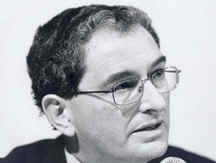 In contrast to other speakers, Porzecanski countered that he did not anticipate the deal would be accepted by most foreign debt holders, and would not be perceived as successful. The G-7 is “finally” getting tough on Argentina and want “the usual 90%+ level of participation,” he declared. Porzecanski viewed a post-exchange IMF deal for the country as unlikely as he didn’t believe the country would fulfill promises on structural reforms, taxes, recapitalization of the banking system, utility rates, etc. At some point, Argentina could even default to the multilaterals, Porzecanski declared. He concluded that “the bottom line is this restructuring isn’t going to be like any of the others….anything that can go wrong, will!” and added that “the default is going to get wider, not narrower, and lawsuits are going to be with us for a very long time.”
In contrast to other speakers, Porzecanski countered that he did not anticipate the deal would be accepted by most foreign debt holders, and would not be perceived as successful. The G-7 is “finally” getting tough on Argentina and want “the usual 90%+ level of participation,” he declared. Porzecanski viewed a post-exchange IMF deal for the country as unlikely as he didn’t believe the country would fulfill promises on structural reforms, taxes, recapitalization of the banking system, utility rates, etc. At some point, Argentina could even default to the multilaterals, Porzecanski declared. He concluded that “the bottom line is this restructuring isn’t going to be like any of the others….anything that can go wrong, will!” and added that “the default is going to get wider, not narrower, and lawsuits are going to be with us for a very long time.”
Risks Remain External
Risks to the asset class are mostly external, according to panelists. USrates, financial market accidents, revaluations in Asia and a loss of confidence in US assets were identified as possible catalysts of a market sell-off. Vera added that, in the latter part of 2005, some might start to worry about 2006 EM elections, while Porzecanski opined that such races could “prove to be less destabilizing than one might think.” Leme and Sekiguchi warned that US policy in the Middle East, in particular Iran, could unnerve the market, with Sekiguchi adding that countries such as Ecuador, Peru and the Philippines were worth watching, as economic problems have translated into political volatility in recent years.
Russia Recommended by Speakers for 2005
The panel concluded with the traditional listing of analyst picks. Russia was a unanimous choice, and Sekiguchi also recommended Peru, Argentine Bodens and Ecuador “despite volatility.” He suggested Philippine and Mexican debt were best avoided.
Leme advised attendees to consider Brazil debt and the Korean won. Vera suggested Venezuela was an “underrated credit,” and also liked Uruguayan issues, while urging investors to avoid euro-denominated Central European bonds.
Porzecanski echoed recommendations on Brazil and Venezuela while eschewing Argentine, Bulgarian and Philippine issues. Finally, Ms. Chang cautioned against holding Uruguay debt.